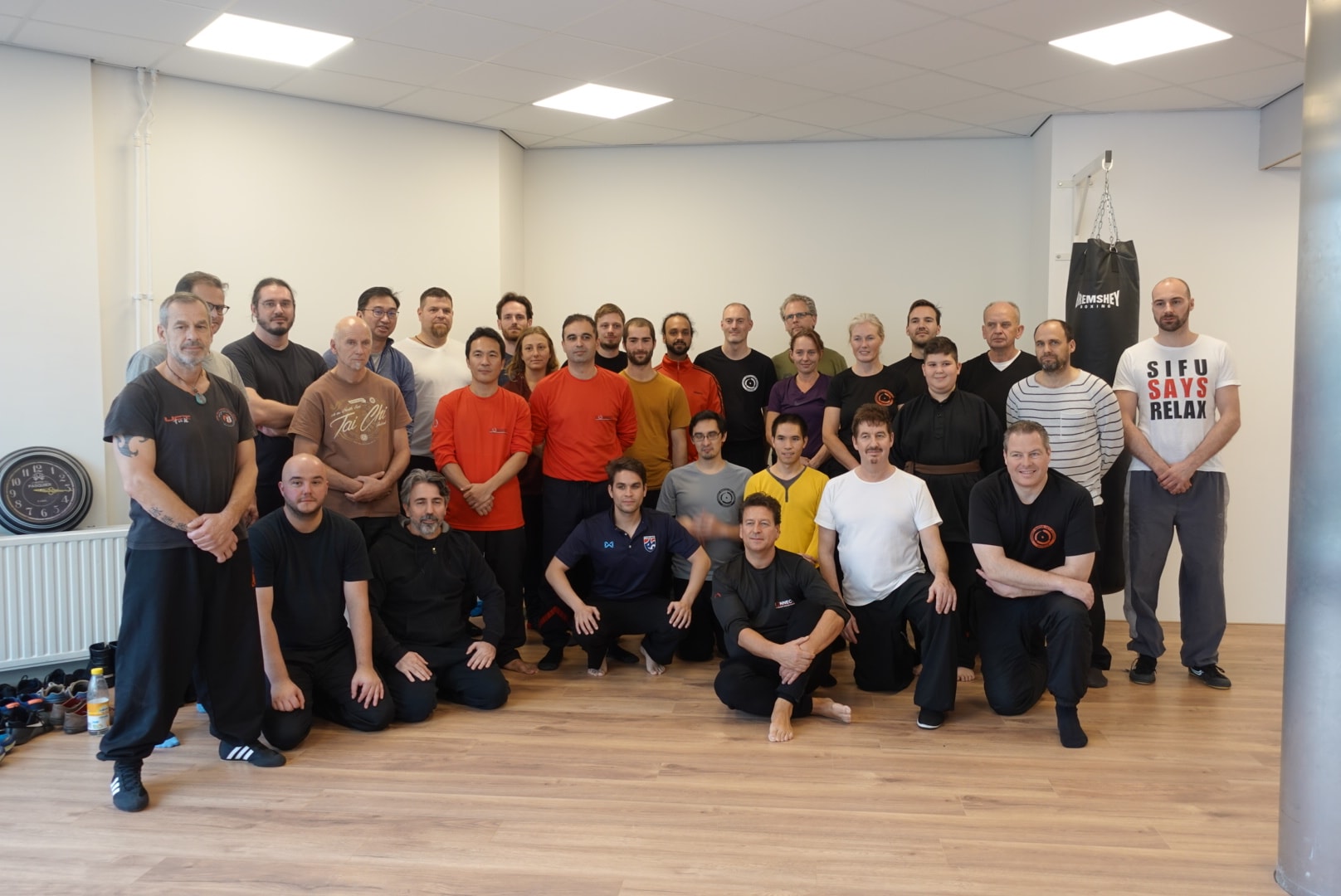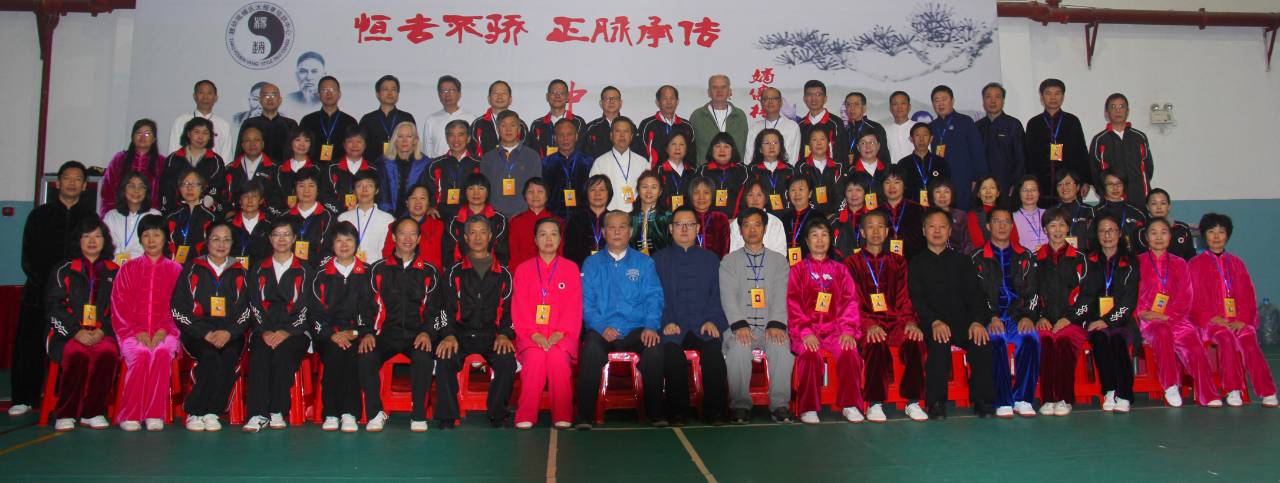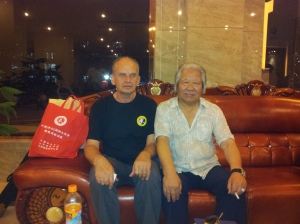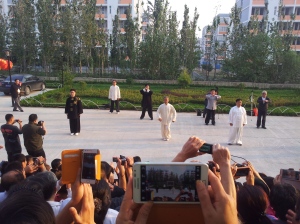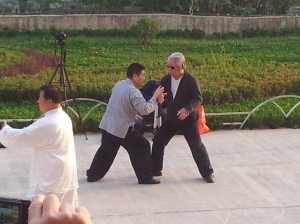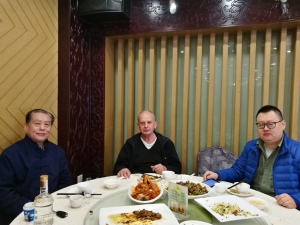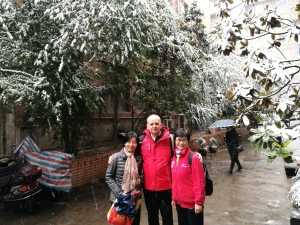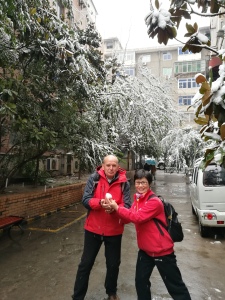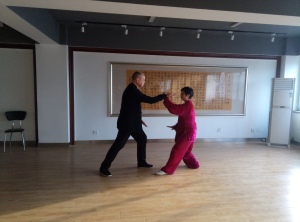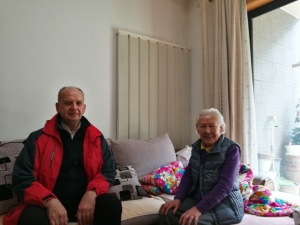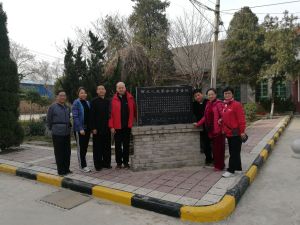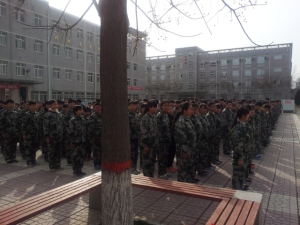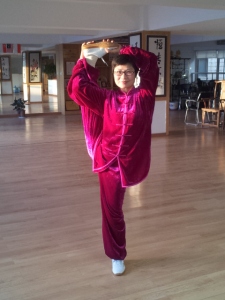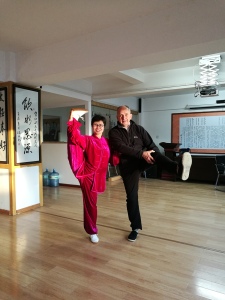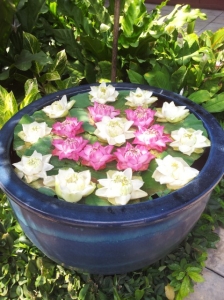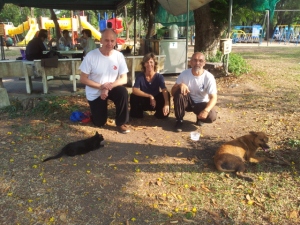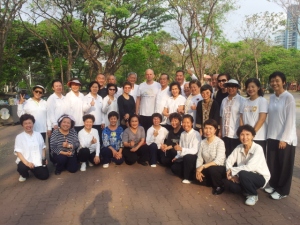[U nastavku pogledajte crnogorsku verziju]
Adapted from ” La costante compresenza di Yin/Yang” (Fajin – Taijiquan & Cultura orientale)

The term “Taiji,” understood as a philosophical principle, embodies the dynamic polarity of the two opposite and complementary aspects that make it up, namely, Yin and Yang. They continually “chase” each other; now one prevails, now the other dominates; while one rises, the other falls; as the first expands, the other retracts, in a fluid and continuous dance.
Taiji Quan is a martial art based on the principle of Taiji. Therefore, it makes no sense to think that its practice could ever deviate from the continuous coexistence of Yin and Yang.
The idea that in the movement of Taiji Quan there is an exclusively Yin phase alternating cyclically with an exclusively Yang phase is incorrect. In reality, something ‘opens,’ and at the same time, something else ‘closes’; as something ‘expands,’ at the same time, something else ‘contracts’; when one part tends to ‘rise,’ another tends to ‘fall’…
Yin and Yang are always co-present, even when one of the two principles appears completely predominant. And it is their harmonization that ensures the body’s ability to express that particular type of ‘unitary’ movement and that ‘internal force’ that is “empty yet full,” “soft yet hard,” “fluid yet solid.”
It is not just a matter of mastering the movement from an external point of view; one must go beyond the “visible movement,” and try to perceive with increasing accuracy the joint alignments. One must also become aware of and manage the subtle variations in muscle tone that can modulate and alternate the levels of tension and relaxation in different parts of the body.
In practice, continuous ‘inner listening’ plays a crucial role: it enables the mind to focus, initially on the distinct parts of the body, until feeling them one by one; and, subsequently, until feeling all of them simultaneously.
Once the intimate interdependence of the different parts of the body is understood, they can be effectively connected. Feet and hands, knees and elbows, hips and shoulders will be constantly crossed by an invisible flow of awareness and energy.
The work of ‘perception and activation’ must ensure that not only the different parts of the body respond to the constant harmonization of Yin/Yang, but also the mind and the intention, as well as the intention and the energy.
=========================================================================
KONSTANTNA KOEGZISTENCIJA YIN/YANGA
Izraz “Taiji,” shvaćen kao filozofski princip, utjelovljuje dinamički polaritet dva suprotna i komplementarna aspekta koji ga čine: Yin i Yang. Stalno se međusobno “hvataju”; čas preovladava jedan, čas drugi; dok se jedan diže, drugi pada; kako se prvi širi, drugi se uvlači, u fluidnom i neprekidnom plesu.
Taiji Quan je borilačka vještina zasnovana na principu Taijija. Nema smisla stoga misliti da bi njegova praksa ikada mogla odstupiti od stalne koegzistencije Yina i Yanga.
Pogrešna je ideja da u pokretu Taiji Quana postoji faza koja je isključivo Yin i koja se ciklično smjenjuje sa fazom koja je isključivo Yang. U stvarnosti, nešto se “otvara,” dok se istovremeno nešto drugo “zatvara”; kao što se nešto “širi,” dok se u isto vrijeme nešto drugo “skuplja”; kada jedan dio teži da se “podigne,” drugi ima tendenciju da “padne.”
Yin i Yang su uvijek prisutni, čak i kada se jedan od ova dva principa čini potpuno dominantnim. Njihova harmonizacija osigurava tijelu sposobnost izražavanja te posebne vrste “jedinstvenog” pokreta i te “unutrašnje snage” koja je “prazna ali puna”, “mekana ali tvrda”, “fluidna ali čvrsta”.
Nije u pitanju samo ovladavanje pokretom sa spoljne tačke gledišta; čovjek mora poći dalje od “vidljivog pokreta” i pokušati da sa sve većom preciznošću sagleda poravnanje zglobova. Takođe mora postati svjesan i upravljati suptilnim varijacijama mišićnog tonusa koje mogu modulisati i mijenjati nivoe napetosti i opuštenosti u različitim dijelovima tijela.
U praksi, kontinuirano “unutrašnje osluškivanje” igra ključnu ulogu: omogućava umu da se fokusira, u početku na različite dijelove tijela, sve dok ih ne osjeti jedan po jedan; i sve dok ih sve ne osjeti istovremeno.
Tek onda kada se shvati intimna međuzavisnost različitih dijelova tijela, tek tada se oni mogu efikasno povezati. Stopala i ruke, koljena i lakat, kukovi i ramena će stalno biti prožeti nevidljivim tokom svijesti i energije.
Rad “percepcije i aktivacije” mora osigurati da ne samo različiti dijelovi tijela odgovaraju stalnoj harmonizaciji Yin/Yang, nego i um i namjera, kao i namjera i energija.
J. R. / K. Š.



